Marvel Super heroes
| série: | Etude Comics |
| dessinateur / scénariste: | Sanderson Peter |
| éditeur: | Barnes+Noble EO 2005 |
| genre: | Porno |
| classement: | biblio711A |
| date: | 2005 |
| format: | cartonné |
| état: | TBE/N |
| valeur: | 10 € |
| critère: | ** |
| remarques: | English book describing in details four classic Marvel super heroes, the story of Marvel's mightiest 1/ Captain America the timeless personification of every American's heroic potential, it was December 1940 and the 2nd world war had consumed Europe for nearly two years, from the very beginning, captain America incarnated America's democratic ideals and passion for freedom, debuting only three years after the first super hero, Superman, captain America was not the first costumed, patriotic-themed hero, but he was and remains the greatest, captain America is also the most important creation from the team of writer Joe Simon and the artist Jack Kirby, at the time they worked for Timely Comics which had entered the super hero genre in 1939 with the premier of the "human torch" and "prince Namor the submariner" in Marvel Comics No.1, Timely would eventually become known as Marvel Comics in the 1960s. >> p. 12 the origin: professor Reinstein's super-soldier serum gave puny Steve Rogers physical strength to match his patriotic spirit, the government wanted their super-soldier to become a symbol of America and so, it created the identity of "captain America" for him, he wore the colors of the American flag and his uniform even had stars and stripes in the early decades of the super hero genre, heroes weren often given kid sidekicks in the belief that children could more easily identify with characters closer to their own age in captain America's case, that sidekick was Bucky Barnes, camp Lehigh's teenage "mascot", it would later be explained that the camp had adopted Bucky after his father had been killed in action there was a third major character in the series, a figure who symbolized the opposite of everything captain America, and the American dream, represented, this was captain America's eternal nemesis, the Red Skull, one of comics' greatest villains, the Red Skull was to Hitler's Germany what captain America was to America, the personification of their goals and ideals the 1940s are now known as the golden age of comics, their first great period of popularity, in 1946, Timely first teamed captain America up with the human Torch, Sub-mariner and other super heroes as the "all winners squad" (in all winners comics No. 19), the forerunner of Marvel's super hero teams of the 1960s but after the end of world war II, comics sales began to decline, comics had to turn to other genres to survive, then in 1956, DC comics editor Julius Schwartz successfully launched a modernized version of one of his company's golden age heroe: the Flash, thus began the great super hero revival now known as the silver age of comics it was in response to the success of Schwartz's Justice League comics that Marvel's authors Stan Lee and Jack Kirby created the "Fantastic Four" in 1961 >> p. 32 the Falcon, the first African-American super hero produced by a mainstream comics company, premiered in captain America No. 117 (1969) 2/ the amazing Spider-Man how an awkward orphan teenager became a pop icon this is Peter Parker, the "amazing spider-man", the most unlikely of heroes who, nonetheless, has become not only Marvel Comics' flagship character, but the star of novels, videogames, television shows and two block-buster movies with still more to come n.b. (block buster = great popular success with a great budget) Spider-man debuted in 1962, less than a year after Stan Lee/ Jack Kirby had launched Marvel's revolution of super hero comics with Fantastic Four No. 1 Martin Goodman, Marvel's publisher, disliked the name, arguing that nobody liked spiders, Stan Lee had named this new character after the "Spider", a masked vigilante who in the 1930s had starred in a series of pulp novels much like those of this more celebrated contemporary, the "Shadow", originally, Stan Lee assigned his top artist, Jack Kirby, to draw Spiderman, yet Lee was dissatisfied with the results, Kirby, co-creator of captain America, is rightly renowned for drawing idealized, muscular, heroic figures, but in this case, Lee wanted something different, not a powerful, mature adult, but a young skinny teenager with superpowers, in this and many other ways, Spider-man would break the conventional mold of super heroes, so Lee tapped Steve Ditko to draw the first Spider-man story moreover, whereas Kirby's heroes might soar through the air like the mighty Thor, Ditko endowed Spider-man with a quirkier way of moving: he scurried up walls like a real spider, in costume, Ditko's Spider-man was both human and strangely bug-like, so the amazing Spider-man made his first appearance on the cover of the final issue of Amazing Adult Fantasy, which had changed its name yet again to Amazing Fantasy for issue No. 15 (August 1962) >> p. 43 the opening page of the Spider-man origin story introduced readers to a very different type of super hero, this famous opening page of Spider-man showed the bespectacled protagonist, Peter Parker, not front and center but standing in the background, his dadness palpable, with in the foreground "cool kids" of Midtown High School entertaining themselves by mocking "bookworm" Peter Parker there was one ability, Peter Parker did not get from the spider's bite: the ability to create his own webbing his true identity hidden by his mask, the shy introverted Peter Parker now felt free to indulge a side of his personality he had long kept buried, as Spider-man he was brash and extroverted, he was also self-centered and egotistical, n.b. in a television appearance, Spider-man saw a guard pursuing a thief, with his powers, Spider-man could easily have stopped the thief, but he couldn't be bothered and let him escape Lee and Ditko's experiment proved successful, and though Amazing Fantasy was no more, the Amazing Spider-man was awarded his own comic book (March 1963), in issue 2 (May 1963), Lee and Ditko introduced the first great Spider-man villain, the "Vulture": an elderly man with a bald, wizened head who wore a winged costume that enabled him to fly, only one issue later (July 1963) came an even greater creation, "doctor Octopus", yet another example of 1960s preoccupations with the dangers of atomic radiation, dr Octopus was a sqat, ugly man with thick glasses and a Moe Howard haircut, but he was also a genius in nuclear physics, he had invented a harness which he wore around his waist that had four robotic arms yet Steve Ditko wearied of his collaboration with Stan Lee, preferring to work on his own, quit both Spider-man and Marvel with issue No. 38 (July 1966), this collaboration had lasted a mere four years, Ditko's unique artistic style was irreplaceable so Stan Lee turned to a very different artist to succeed Ditko: John Romita whose style was much handsomer than Ditko's thin plain version >> p. 61 the final page of "Spider-Man no more" in issue No. 50 (1967) when Peter Parker threw his costume in a trashcan and abandoned his super hero identity 3/ the incredible Hulk the original antihero after Spider-man, the best-known Marvel super hero is not a hero at all, not in conventional terms, instead he is an antihero, a monster who embodies not our highest ideals but our darker impulses, the personification of rage and violence what must have surprised readers of the time was that one of the new heroes was himself a monster, Ben Grimm had been transformed by cosmic radiation into the "Thing", a superhumanly strong creature with first an orange, rocklike hide, the Thing's monstrous appearance was the visual counterpart to Grimm's violent temper, as if the beast within Ben Grimm was now manifest to the world, but the Thing was also a tragic figure, and this too was new for super hero comics the title character of the incredible Hulk whose first issue was dated May 1962 was another man turned into a monster n.b we have to make a difference a) the Thing with the orange rocklike hide alias Ben Grimm was a member of the Fantastic Four while b) the Hulk with the green-skinned appearance alias Bruce Banner was a fictional separate hero created by Stan Lee and Jack Kirby Lee and Kirby also co-created a team of mutants, the X-Men, it is the origin of the Hulk, however that most directly reflects the threat of nuclear Armageddon, dr. Banner, a nuclear physicist, during an experiment made by himself, was irradiated by gamma rays and began to transform into the monster Hulk for issue No. 5 Lee and Kirby co-created one of the Hulk's leading foes: Tyrannus, the last emperor of ancient Rome who had discovered an underground fountain of youth that had sustained his life for centuries unfortunately, issue No. 6 (March 1963) was the last in the Hulk's original series: the Incredible Hulk was cancelled due to poor sales, still, Lee and Kirby would not give up on their creation, the same month they put the Hulk in the first issue of their brand new comic book: the Avengers, this series being created to bring together several of the stars of Marvel's growing line of super hero comics, four new heroes were battling within the Avengers: the mighty Thor, Iron Man, Ant-Man and the Wasp in 1964, Stan Lee gave the Hulk his own series again, this time as the second feature of Tales to Astonish, the Hulk sought solitude and peace, but neither the military nor his various enemies would grant him his wish, general "Thunderbolt" Ross, on the other hand, became the Hulk's implacable enemy in a combination of machismo and childishness, the Hulk boasted that he was "the strongest one that lives" and he was probably right, the Hulk was larger and stronger than Spider-Man or the Thing and was at least a match for Marvel's strongest hero: the mighty Thor, moreover, it was eventually established that the angrier the Hulk got, the stronger he became, to this day there is no known upper limit to Hulk's strength with Marvel's growing success and changes in its distribution system, the company was able to begin expanding its line of comics, and so with issue No. 101 (April 1968), Tales to Astonish was renamed the Incredible Hulk Roy Thomas succeeded Stan Lee as the Hulk's writer and made major contributions to the character's story, in issue No. 123 (January 1970), Thomas had Reed Richards, leader of the Fantastic Four succeed in curing Banner who quickly proposed to the long-suffering Betty Ross, daughter of the general of the same name, who always defended the Hulk, to marry him, but in the next issue, their wedding ceremony was interrupted by the Leader, one of Hulk's enemies, who irradiated Banner again, causing him to transform back into the savage Hulk >> p. 86 in 1980, the Hulk's popularity as a television character inspired Stan Lee and John Buscema to invent the savage She-Hulk, who however did not become as successful as the savage He-Hulk >> p. 92 during his run as writer of the Incredible Hulk, Peter David's sharp dialogue explored new depths of the Hulk's psyche (1987) 4/ Wolverine Marvel's popular mutant with the mysterious past it has been claimed that no super hero created at any comics company or in any medium has matched the enduring popularity and iconic power of the great characters created at Marvel in the 1960s, there is one clear exception to the rule, who first appeared in the mid-1970s and has since become one of the most famous super heroes in comics, television and the movies: Wolverine, the mutant with the invincible slashing claws made of adamantium steel whereas the Fantastic Four, Spider-Man and the Hulk gained their superpowers through inadvertent exposure to radiation, the X-Men were mutants born with the genetic potential for superpowers, which usually emerged in adolescence in the Marvel universe, mutants were not ordinary human beings, who acquired superpowers by chance, they were members of a newly evolving superhuman race the founder of the X-Men was professor Charles Xavier, a man who was confined to a wheelchair and yet had the most powerful mind on earth, he was a genius who possessed great telepathic powers than anyone in the planet n.b. the X-Men are mutants, a subspecies of humans who are born with superhuman abilities, the X-Men fight for peace and equality between normal humans and mutants in a world where antimutant bigotry is fierce and widespread, they are led by Charles Xavier, also known as Professor X, a powerful mutant telepath who can control and read minds, their archenemy is Magneto, a powerful mutant with the ability to generate and control magnetic fields, professor X and Magneto have opposing views and philosophies regarding the relationship between mutants and humans, while professor X works towards peace and understanding between mutants and humans, Magneto views humans as a threat and believes in taking an aggressive approach against them, though he has found himself working alongside the X-Men from time to time Wolverine was introduced in Incredible Hulk No. 180 (October 1974), Marvel's art director John Romita senior created the character's visual appearance and costume, but it was regular Hulk artist Herb Trimpe who drew the two-part story, in that story Hulk was fighting the Wolverine but afterwards they became allies >> p. 102 when the X-Men stormed back into the Marvel universe in Giant-Size-X-Men (issue 1 1975), Wolverine came with them >> p. 111 Frank Miller's covers for issues 2-4 of the Wolferine mini-series (early 1980s) >> p. 112 Magneto's ability to manipulate metal makes him a particularly dangerous enemy to adamantium-laced Wolverine who nearly died following this confrontation in X-Men 2nd series no. 25 (1993) note: at the end of the book there is an useful index stating names of super heroes and the issues in which they would appear >> a very interesting study book on comics, restricted to 4 super heroes, but very well formulated with superb illustrations n.b. superhero Batman is not mentioned here because he is not a Marvel superhero, but was created by Bob Kane for D.C. Comics (Detective Comics) Information a) Wolverine abilities: superhuman senses, agility, reflexes and animal-like attributes, extended longevity via regenerative healing factor, adamantium-plated skeleton with retractable bone claws Wolverine (born James Howlett, commonly known as Logan and sometimes as Weapon X) is a fictional character appearing in American comic books published by Marvel Comics, mostly in association with the X-Men, he is a mutant who possesses animal-keen senses, enhanced physical capabilities, powerful regenerative ability known as a healing factor and three retractable bone claws in each hand Wolverine has been depicted variously as a member of the X-Men, Alpha Flight, and the Avengers. the character appeared in the last panel of the Incredible Hulk #180 before having a larger role in #181 (cover-dated Nov. 1974), he was created by writer Len Wein and Marvel art director John Romita senior who designed the character, and was first drawn for publication by Herb Trimpe Wolverine then joined a revamped version of the superhero team the X-Men, where eventually writer Chris Claremont and artist-writer John Byrne would play significant roles in the character's development, artist Frank Miller collaborated with Claremont and helped to revise the character with a four-part eponymous limited series, called mini-series from September to December 1982 which debuted Wolverine's catchphrase: "I'm the best there is at what I do, but what I do best isn't very nice" b) editor's commentary at the back of the book: superhuman strength, spider-sense, the ability to leap more than a mile, retractable adamantium claws, in the Marvel universe, superpowers turn normal people into superhumans, but it is the way they use these abilities that defines them as super heroes packed with scintillating stories and full-color illustrations from the decades-long history of captain America, the Incredible Hulk, the Amazing Spider-Man and Wolverine, Classic Marvel Super Heroes brings together Marvel's mightiest, Captain America's half-century as the incarnation of his nation's ideals, Hulk's emergence as the first popular super hero antihero, Spider-Man's transformation from an awkward teenager into a cultural icon and Wolverine's evolution into the most popular of Marvel's mutants, it's all in this exciting look at how the artists and writers of Marvel Comics have redefined the super hero genre Peter Sanderson joined the staff of Marvel Comics as an editor and later became the company's archivist, he is the author of Marvel Universe, and the ultimate guide to the X-Men and was a principal writer of the official handbook of the Marvel Universe |
| couvertures: | 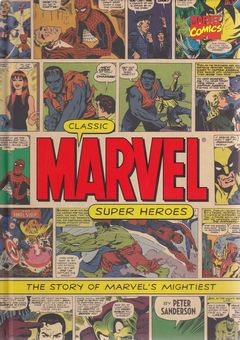 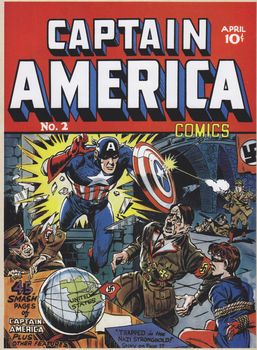 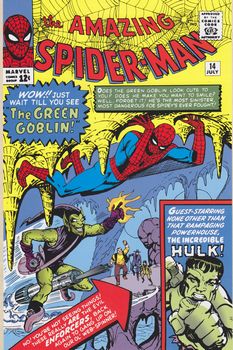 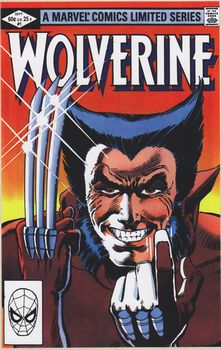 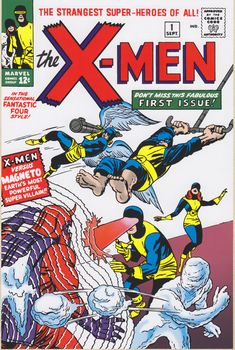 |
Copyright 2008 - 2025 G. Rudolf
